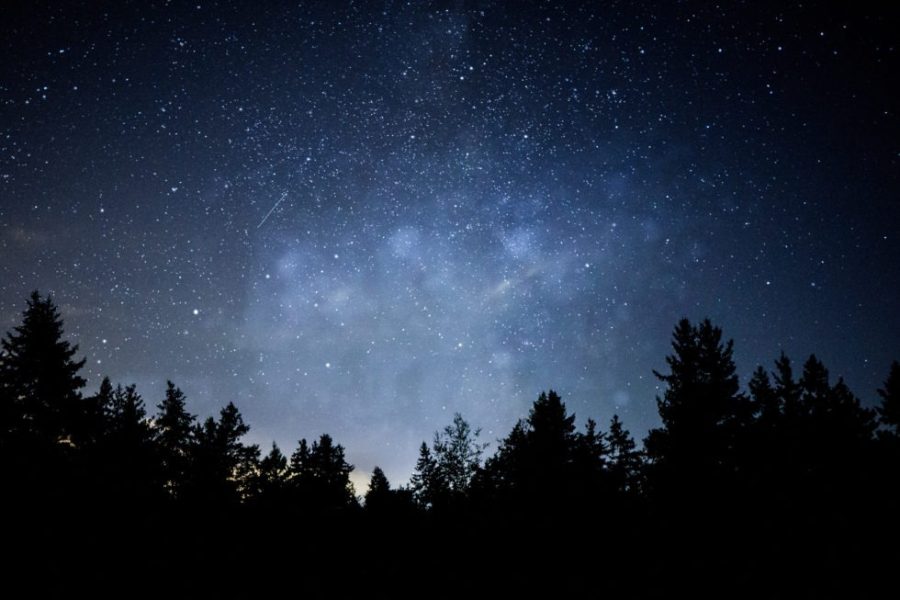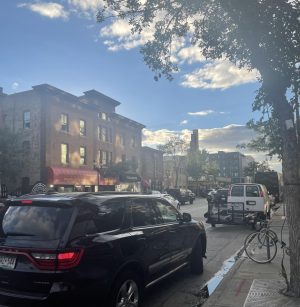Rare Green Comet Is Visible From Earth And Revives Light Pollution Debate
February 8, 2023
On February 1, a green colored comet made its closest pass by Earth since the stone age. The comet could be seen as a green and white cloud in the night sky, but not too easily. The comet passed by 26 million miles away, according to EarthSky, which is still 100 times further away than the moon. The fact remains that the comment could be seen, but it depends on where you are observing from. An ongoing debate in Minneapolis plays into the controversial reality of how clearly people can view the night sky.
The green comet, named C/2022 E3 (ZTF). The ZTF stands for Zwinky Transient Facility, who discovered the comet at the Palomar Observatory of San Diego County in March of 2022. The last time this comet was visible from Earth was around 50,000 years ago. The process takes so long due to the comet’s large orbit which brings it to the outer reaches of the solar system. An most interesting aspect of this comet, according to Northwestern astrophysics graduate student Imran Sultan, is that,
As the comet moves further away from Earth, it can be seen in different parts of the night sky. Although it was closest on February 1, the best viewing may come in weeks after this. This is because of the brightness of the moon in the first week of February. Once the moon begins to dim, the comet will be easier to pick out. Best viewing can be achieved in areas of low light pollution. So what does that mean for residents of Minneapolis?
Light pollution is a well-known side effect of industrial civilization. It is described as the excessive use of artificial light and can have serious environmental consequences. According to the “World Atlas of Artificial Night Sky Brightness,” 99% of the public in the United States cannot experience a natural night sky. Obviously, as a city of over 400,000 people, Minneapolis falls into the category of those greatly impacted by skyglow.
There are very real consequences of living in areas stripped of their natural darkness. According to Todd Burlet, the president of the Minnesota chapter of the International Dark-Sky Association, light pollution is connected to sleep disorders, increased carbon emissions, and even possible links to cancer. Apart from the physical effects, as much as 35% of the energy used to generate night light is wasted. These facts seem to point to a need for less light during the night time. However, there is a strong argument against this.
Many people, especially in the winter months, are forced to commute during dark hours. This can be dangerous and scary. A serious public safety concern. This is why Minneapolis Mayor Jacob Frey proposed $9 million in lighting upgrades for 2023 and 2024. This has ignited a community discussion. The city claims to use more LED lights going forward, as they are higher quality and more sustainable, but Todd Burlet says that softer yellow lights are less glaring and cause less light pollution. He does not disagree that Minneapolis lighting needs to be improved, but he is concerned that the night sky will be neglected. “We just want to make sure that when the city puts in that lighting that they’re making smart and good decisions on the nature and location,” Burlet told Startribune. He said that shielding fixtures that direct light downwards are effective in preventing light pollution and should be seriously considered.
There are many factors that go into both sides of this argument. Other cities have had success in the past with prioritizing both health and safety, but it is hard to weigh the potential impact of taking short cuts on either. With police shortages and crime concerns within the city, increased lighting could be seen as an effective path to keeping streets safer. Physical and mental health can be greatly improved with a darker night sky, however, and certain celestial moments become impossible to consume with the city’s night pollution. There is undoubtedly a debate to be had. Either way, Minneapolis residents can hope for conscious improvements to their community’s lighting.
















DeAnn • Feb 15, 2023 at 11:24 am
Thank you for bringing forward the downsides of light pollution! Just for clarification, there is no longer a debate whether light pollution is somehow a necessary evil in order to have less crime and safer streets. With advances in technology, higher quality LED luminaires are now available for the same exact price and same color rendering index. Around 2015-2016, city after city installed overly bright, cool, (now considered “clunkers”) LED streetlights and overlighting, exceeding the IES national standards and the AMA streetlight recommendations, and causing unnecessary light pollution. Those luminaires are cheaper, in part because residents in other cities have rejected them. Residents pushed back, stopped driving at night or installed blackout curtains, reducing neighborhood awareness. There are no replicated traffic studies showing that “cool” (blue) LED lighting is safer at night. In fact, the clunker-type LED streetlights make it harder to see at night, and more dangerous for pedestrians, because of how our night vision works. Please follow the lead of Tucscon and Phoenix, Arizona! They included tourism, astronomy, public awareness and bird migration in their streetlight selection, becoming models of sustainability!! No debate – better lighting is better for everyone!!
Deborah • Feb 12, 2023 at 11:00 am
If white LED light made a city safer, Houston, TX would be the safest city in the world. Instead accidents are at record levels, road rage is rampant and domestic violence has doubled in three years. Our LED lighting has probably quadrupled in that time. We finally passed an ordinance to shield and limit blue content in commercial LED lighting. I have traveled. The best night driving I have ever seen is in Dark Sky cities. Glare is virtually non-existent and visibility is far better. It is false that overly bright light is protective or saves energy. No, efficient use of lighting saved energy and motion detection can prevent crime instead of just take pictures after the fact.